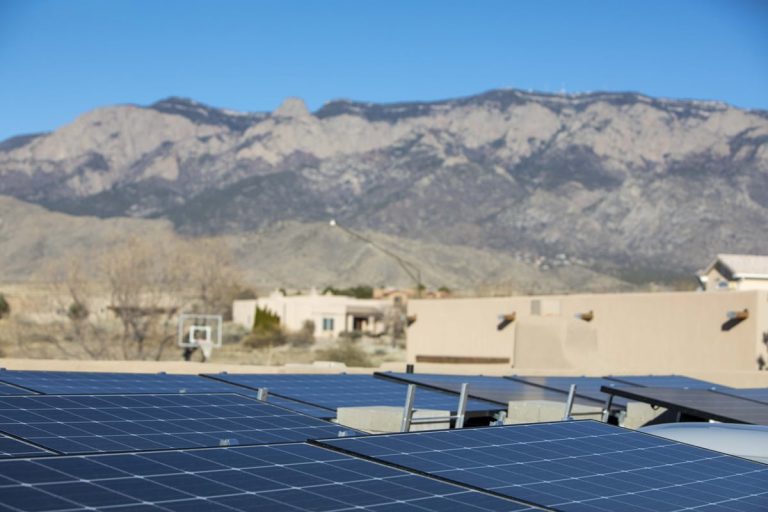How to Read an Electric Bill
Your electric bill is typically not considered an optional bill to pay. You want electricity? Then you have to pay for it. It’s just one of those bills you can’t avoid and typically don’t look forward to getting, especially when you’ve had the A/C cranking through the hot summer months.
We at Poulin Solar Pro, wanted to take a deeper dive into your bill for Albuquerque residents, so they can understand it better. It can be a little bit confusing to understand each charge and how they pertain to you as a consumer, so we thought it would be good to look at a few key elements.
Blocked Electric Billing
You’re charged per kilowatt-hour in blocked billing in intervals of 450 kWh. A kilowatt-hour is a basic measurement of electricity usage of 1000 kilowatts for 1 hour of use.
Here is a typical breakdown of blocked billing charges:
- Block 1: 0-450 kWh hours is $0.0779432/kWh
Block 2: 450-900 kWh hours is $0.1240339/kWh
Block 3: 900 kWh+ hours is $0.1495326/kWh, depending on where you live
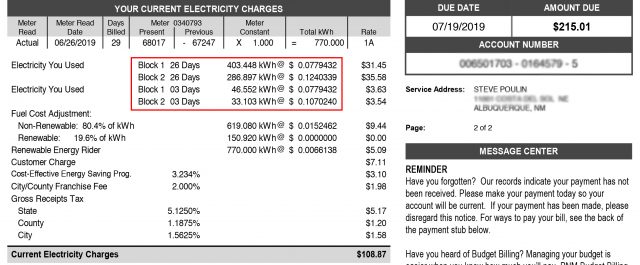
When you have unusual usage, such as having company over or an electric device is left on, you really pay for the extra electricity used. If you’re already out of block 1, you will pay very high rates for this additional usage. But when you go solar, your solar panels will produce energy, so you’ll only pay for what your system didn’t produce, which is usually in block 1—the cheaper rate.
Most things you buy are cheaper by the dozen. If you buy in bulk, the more you should save on your energy bills, right? However, it’s more like buying 2 cars at the dealership and they ask you to pay 30% more on the second car. That’s crazy!
Fuel Cost Adjustment
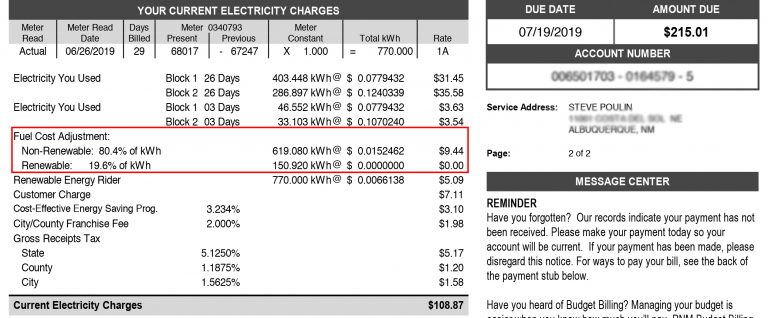
This portion of the bill shows the actual costs of producing energy: non-renewable or renewable. Non-renewable sources of energy production include coal, oil, and natural gas. Renewable energy, including solar and wind, is currently $0 on the bill, but the cost for this service is recovered through the renewable energy rider, more on that in the next section.
I wanted to point out this portion of the bill because it directly shows the amount of energy being used from the source type, non-renewable energy.
According to the U.S. Energy Information Administration describes non-renewable energy this way: “These energy sources are called nonrenewable because their supplies are limited to the amounts that we can mine or extract from the earth.”
There is a limited supply of the traditional sources of energy we use, however, New Mexico receives an average of 310 sunny days each year! Limited sources of non-renewable energy, but unlimited sunshine in our state.
It must be noted as well, that our state is taking aggressive steps to have 100% renewable energy by 2045.
To give you an idea of what the use of energy is across the U.S., see chart below.
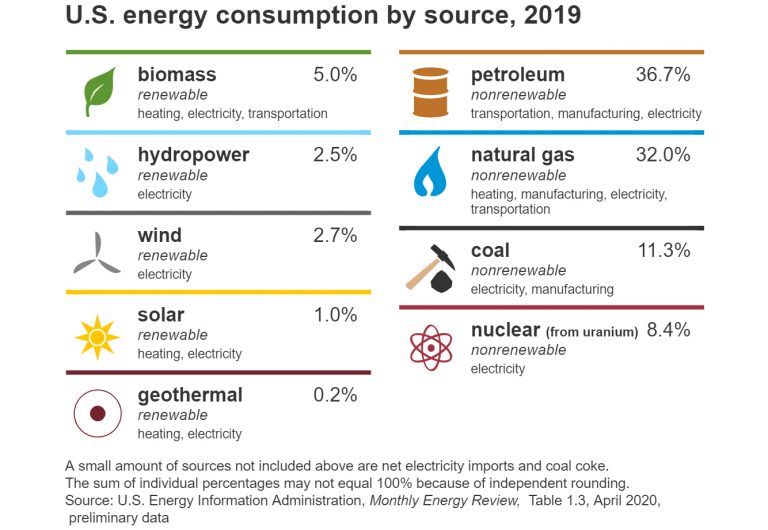
Renewable Energy Rider
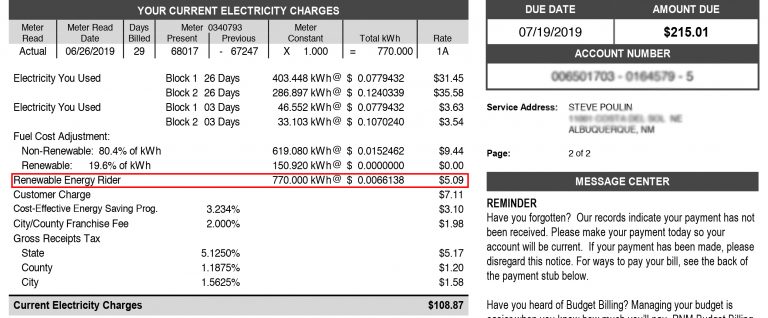
What exactly is the renewable energy rider fee you’re paying?
The utility company passes along the fee to create clean sources of energy onto their customers. In a way, you’re already paying for renewable energy to be used in your community, without having the personal benefits of having solar (no more electric bill).
As of February 2020, you’re charged $0.0076413 per kWh of the total usage you used in the billing month.
Once you have solar though, the renewable energy rider is removed from your billing, giving you extra savings.
What Does Your Electricity Bill Look Like After Going Solar?
When a person goes solar, they typically “trade” their electric bill for a solar bill (loan) at a fixed rate. Many times, their monthly solar payment will be less than their average electric bill cost—giving them instant savings! When they stay tied to the grid (which we recommend), then the only charge they have from the utility company is about an $8 fee to stay on the grid. Plus, once you finish paying off your solar loan, you eliminate that bill, with only the grid fee left to pay. WOW, what a savings!
Know Your Usage Anytime
When you go solar, you have an energy production software that is not controlled by the utility company. You have real-time access to it through web-based monitoring, so you can track your production any time you’d like.
When you get your electric bill after you go solar, you can confirm the usage numbers from the utility company with the solar production numbers on your app. You don’t have to take their word for it anymore, and you’re in FULL control of your system. It takes the guessing game out of your bill with 3rd party verification of your usage. It’s very accurate and confirms that your solar system is working properly as well.
If you go over the energy produced by your system, you’ll be billed by the lower billing blocks by the utility company per 450 kWh.
Net Metering – Renewable Energy Credit
“Net metering is a billing mechanism that credits solar energy system owners for the electricity they add to the grid. For example, if a residential customer has a PV system on their roof, it may generate more electricity than the home uses during daylight hours.” –SEIA
This is a wonderful benefit to those who go solar. If you don’t use all the energy your solar system produces, you can “save” it for later use!
Let’s show you an example of Steve Poulin’s bill, co-owner of Poulin Solar Pro. He recently went solar after moving to his new home!

Steve’s solar system produced 1082 kWh. Since his house only needed 1042 kWh, he made 40 kWh more than he needed (as seen in the 40 in parentheses in bill above), as a credit. He is “banking” the extra 40 kWh for later.
In essence, Steve’s meter is SPINNING BACKWARDS! He says he can’t WAIT to see his July bill.
How many of you are waiting to see your July bill?
Final Thoughts
It’s one of the few bills we have little control over. Every house has a cost for electricity, so investing the cost into your own system, plus all the federal and state credit, makes sense from an investment perspective.
Current Tax Incentives
Federal Incentives
- 26% federal tax credit—expires 12/31/20
- 22% federal tax credit—valid calendar year of 2021
New Mexico State Incentives
- 10% state tax credit—valid 3/1/20- 12/31/27
- $0 State Sales Tax—current rules, subject to change
- $0 Property Tax—you will still be charged property tax, just not on your solar system.
To learn more about whether going solar is a good option for you,
call us 505-880-2500, or click below to
Schedule a Free Solar Consultation
Even if you just see what your savings could be,
it is an eye-opening experience!

